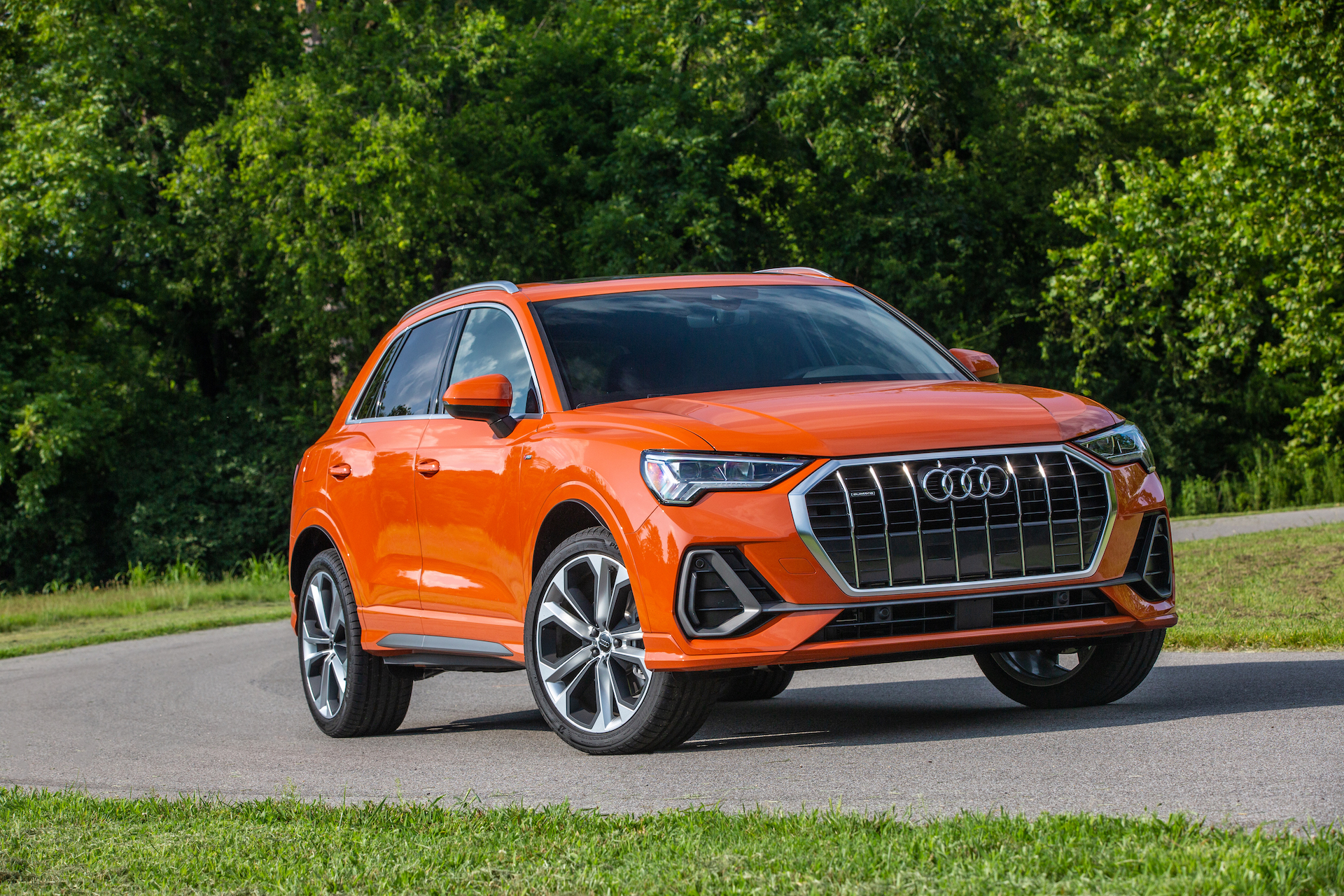
Audi has pared down the Q3’s configurations for the new model year, but all are well-equipped, and the latest Audi infotainment interface works well. It’s not a stellar value, nor is its warranty notable, and options are somewhat slim.
Given all that, we score the 2019 Q3 a 7 out of 10 for features. (Read more about how we rate cars.)
Standard equipment on the $35,695 Q3 Premium base model includes power features, a panoramic roof, a 10.3-inch digital instrument display and an 8.8-inch center touchscreen, LED headlights, 18-inch wheels, leather upholstery, an eight-way power driver seat, heated front seats, Apple CarPlay and Android Auto compatibility with an AM/FM receiver, and keyless ignition.
Options include a 12.3-inch gauge display—Audi’s “virtual cockpit”—and a 10.1-inch center touchscreen that accepts handwritten input, a B&O 3D sound system, adaptive cruise control and a surround-view camera system. Rear side airbags are $350; a $1,600 bundle includes satellite radio, front and rear parking sensors, lane-departure warnings and blind-spot monitors. An S line trim bundle is $1,300 and includes 19-inch wheels and aluminum door sills. Oh, and if you want anything other than white or orange paint, it’ll cost $595.
The $38,795 Premium Plus has most of what we want and few extravagances; among Q3s, it’s the value choice. It gains a power-adjustable front passenger seat, front and rear parking sensors, blind-spot monitors and lane-departure warnings, satellite radio, and full LED headlights. The S line trim package is $1,300, while navigation and the widescreen gauges with mapping are $2,000. A 15-speaker, 680-watt B&O sound system costs $850, and adaptive cruise is $800.
The $43,895 Prestige gets standard S line trim, the virtual-cockpit screen and a larger 10.1-inch center screen, the Bang & Olufsen sound system, adaptive cruise control, the surround-view camera system, and ambient interior lighting. Sport seats are $500, while orange inlay trim costs $350 and 20-inch wheels, $800.
Audi’s infotainment has moved smartly ahead with its digital gauge cluster and its Google Earth mapping, not to mention the wide screen on the center stack—which accepts handwritten input in its 10.1-inch size. Among the more complex setups we’ve sampled, Audi’s works best.
Review continues below
0 Kommentarer